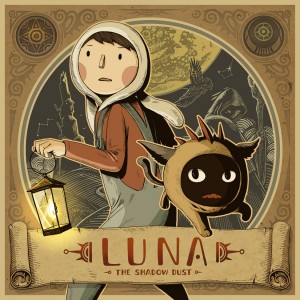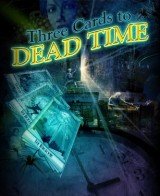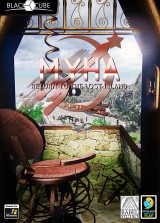Review for Woven

I had no idea what to expect when I started to play Woven, though the concept of a realm created from vivid textiles was intriguing. And in that respect the game certainly lived up to my expectations with its delectable aesthetic. It’s neon-like without glimmer and blur, but with a softness that disguises an underlying despair. If this world’s dark mystery remains unsolved, if artfully voiced rhyming memories are ignored, and if diverse (though sometimes cumbersome) puzzles are not solved, then the fabric of this sweetly seductive life will be ripped to shreds. Preventing that from happening will be no easy task, particularly given an artificially steep learning curve making things initially more difficult then they need to be, but the journey is otherwise a delightfully charming open-world adventure with an eclectic cast of cuddly wildlife.
You assume the role of Stuffy, a (literally) stuffed elephant who slips down a cliff into an enchanted valley of yellow daisies, colorful caves and giant artichokes. Pathways through rolling hills beckon, and the impulse to drink it all in is irresistible. The ground is tufted like a carpet or knitted like a sweater. Giant buttons litter the countryside. Red-felted mushrooms, stitched-up cacti and jazzily striped hills generate a comfy ambiance. A turtle shell has an argyle surface and acorns look like tea cozies. Then later, more ominously, sharp and metallic objects appear as new dream-like areas open up – glittering moths, clamorous turbines, a huge scorpion clanking by on metal tracks.
Stuffy is soft and woolly with large, serious eyes and a wobbly child-like gait. He is curious and kind – if a bit inept – and he doesn’t bother analyzing the strange events unfolding around him. Stuffy is joined by Glitch, a conscientious firefly emitting a gentle light. Though freshly awakened from a deep sleep, and remembering nothing about his past, Glitch decides to trust his newfound companion. He can sense that he has been here before, and that something sinister is infiltrating the terrain. The rhyming, well-written and expertly voiced narrative dives deep into what threatens this world, unveiling Stuffy’s friendly impulses and Glitch’s anxious speculations, which makes for a pleasing dynamic.
As innocent as Woven appears on the outside, its whimsical presentation hides another unexpected reality: the nonlinear gameplay is surprisingly difficult. It looks like child’s play, but it assuredly isn’t. Hotspots can be difficult to locate, certain challenges are poorly clued, others require quick reflexes, and the imprecision of Glitch’s light makes a couple of tasks almost impossible. It wasn’t until I realized that much of the trickiest stuff was optional that I was able to relax and thoroughly enjoy the game. Satisfaction would have surfaced much sooner if there had been a map. And a way to keep Glitch from drifting all over the place. And a clear indication of what was essential to progress.
I played the PC version, where you have a choice between point-and-clicking or using the keyboard or a controller. You guide Stuffy’s movements, and Glitch follows. At first I tried to just mouse my way, but this method is tediously slow. Plus there’s an annoying ambient sound when clicking to go forward. So I soon switched to the WASD keys for movement, with the mouse for panning. This provides much smoother navigation, but it also frees Glitch to waft all around Stuffy. Much later I discovered that Glitch’s movements can be controlled by moving the mouse without pressing either button, but this is only helpful when Stuffy is standing still.
The atmosphere in Woven's five expansive and imaginative environments is enhanced by a background score with sprightly melodies, syncopated electronic tones, fanciful musical accents and vibrating dissonance. Unfortunately, various visual elements in each individual landscape are repeated often, which becomes an issue if, like me, you do not have an infallible sense of direction. If you look for clumps of red-leafed trees or ribbons of bamboo to keep yourself oriented, for example, you will find that there are similar trees and ribbons elsewhere, and each branching path looks a lot like the others. I found it easier to navigate by focusing on the fauna that cropped up in these locales rather than the flora – creatures such as grazing buffalo, skittering beetles and thumping beavers. Their animations are somewhat stiff, but this suits the puffy, cartoon-like graphic design. After blundering around (“Hey, I’ve seen these moles three times already!”), I eventually discovered everything of importance, but it was often time-consuming.
The cute creatures that populate the gameworld can be interacted with in different ways. Usually Stuffy needs to get animals or insects to skedaddle (so that he can access their food or lairs) but sometimes he needs to lure them to another location. The most difficult luring challenges use Glitch’s light as enticement. You must train Glitch’s beams on the target until insects settle there, then quickly move on to the next destination. The problem is that Glitch’s light is unwieldy in the extreme (particularly when Stuffy is moving), so that while you guide Stuffy to the next spot (to bring Glitch along), the beams shift the wrong way and the insects go back to square one. I managed one light-luring task by reverting to the point-and-click interface, which makes Glitch’s movements less random. However, I massively failed the toughest sequence that takes place in the jungle, despite multiple attempts using different controls. I finally grasped that this challenge wasn’t mandatory when, much to my astonishment, I was able to complete the jungle region even though I hadn’t mastered this seemingly important feat.
Though they aren’t the focus of gameplay, Woven also contains several traditional conundrums, such as bridges in which raising one pillar lowers another, colorful symbols to be arranged in the correct order, power channels to connect, and musical tones to copy. These provide some amusing diversions from the game’s chief objective: locating and (often) processing different collectibles that can change Stuffy’s appearance, helping him to get past persnickety guardians or blend seamlessly into the terrain. Each level contains a couple dozen textile patches, some that are quite easy to spot, but others that can be accessed only if you manage to slow down a scooting creature or somehow change the environment. There are also hidden caves with story-based murals and hard-to-find memory devices that help Glitch recall fragments of his past. Though the caves and memory gizmos are optional, a few of Stuffy’s stylish or camouflaging collectible patches are essential to completing the game.
Also crucial to progress are blueprint devices. These involve a fast-clicking activity where you move bars to process dots. When done properly, each grants Stuffy the ability to transform into another creature – among many other iterations, he can become a rhino, a rabbit, an anteater, and a reindeer, with each metamorphosis featuring different skillsets.
Having amassed patches and blueprints, it’s time to start up a knitting/weaving machine. These scattered contraptions operate with a whoosh that hints at a magical core and emit a smoky steam, which makes them easy to spot. The machines have two functions – a Patcher, which applies a wild assortments of fabric designs to Stuffy’s body; and a Knitter, which changes his head, legs, and arms into those of the various animals, with hooves for jumping, mouths for vocalizing, or paws for pushing, etc. (I suggest using the nearest knitting machine right before exiting the game because this always creates a recent save to return to; otherwise the autosave-only feature will sometimes force you to retrace more steps to get back up to speed.)
Patches range from knitted and leather to ridiculously vibrant patterns like the Scottish plaid, Waldo banding, and Valentine hearts. It’s a lot of fun to see Stuffy spiffed up this way. Cutscenes that advance the plot always reveal the protagonist in the outrageously random garb you just dressed him in – how this is accomplished seems wizardly. Eventually, Stuffy can be transformed into almost anything – say, a toad with the wings of a bird and the hooves of an antelope. Each appendage has certain attributes, not all of which Stuffy can embody simultaneously. So there will be times when you have to temporarily abandon the flight skill in order to push buttons or pick things up. (Although there’s no inventory, you do acquire the ability to carry one item at a time.)
Glitch too has a range of talents: he can scan and upload patches, operate certain machinery, and of course generate light. When you come upon an item that is interactive, Glitch (usually) identifies the hotspot by emitting an icon showing the correct action to take. You must click on the corresponding icon at the bottom of the screen while he is properly aligned. Since Glitch circles around as Stuffy moves, however, and the panning is malleable, it’s common to have an icon pop up for only brief moments. If you aren’t paying attention – because you’re admiring the scenery, for instance – it’s easy to miss a potential interaction. Plus, be forewarned that sometimes (such as when needing to fly), Glitch doesn’t bother to generate a helpful icon at all.
The only way to be sure you’ve found everything is to repeatedly walk by all walls, rocks, flower buds, clamshells, etc. at slightly different distances, while keeping an eagle eye on Glitch and scoping out patches or devices that blend right in with the background. It’s also worth noting that while sharp inclines are usually barriers, they aren’t always. The same hilly angle that blocks Stuffy in one place may be passable further on.
Woven clearly bucks the recent trend of making adventures easier to play and finish. Navigation through this large open world can be confusing, and there’s so much to see and do, with the gameplay so nonlinear, that even pinning down where to find help in a walkthrough can be frustrating. If you are stuck, I recommend simply making your way into another part of the locale to take on the next challenge. Whenever I did this, I often found that the toughest conundrums weren’t necessary to complete at all, as it was possible to continue on without finishing every task or finding every collectible.
The concluding cutscenes are impressive, with a touch of ambiguity that’s open to your own interpretation. To get there, it took me twenty hours to puzzle, patch, mutate, decoy, and explore my way through all five marvelous landscapes, piecing together fragments of memory and finding out how, unbeknownst to them, Stuffy and Glitch are this world’s last best chance to survive. It’s easy to get lost along the way, yet the remarkable originality of the vistas makes back-and-forthing bearable. Despite its charming appearance, the game is unexpectedly tough, especially for completists who hope to discover every optional collectible and activity. Be prepared for some cumbersome control issues that make your task harder than it needs to be, but the story is very family-friendly and any sharp-eyed, persistent gamer who admires picturesque graphics should find themselves happily entangled in Woven's supple spell.





























